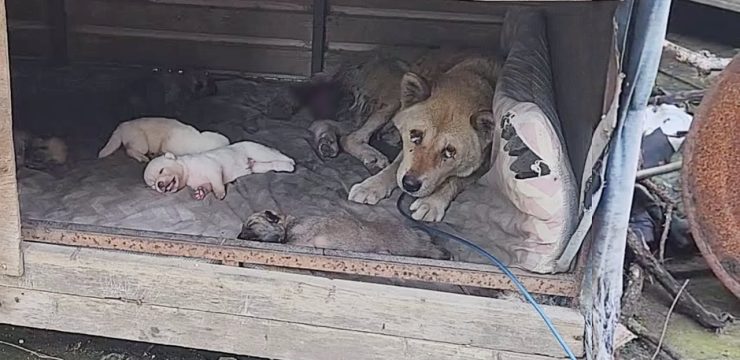Life in a small village or town has an undeniable charm that resonates deeply with many people. There’s something special about living in a place where nearly everyone knows each other by name, where friendly greetings are exchanged on the street, and where familiar faces populate the local pub, post office, and small neighborhood stores. The sense of belonging in such a tight-knit community creates a unique warmth and security that many find appealing. Of course, not everyone is drawn to this lifestyle—some prefer the anonymity and fast-paced energy of big cities—but for those who enjoy small-town living, the connection and camaraderie it offers can be incredibly fulfilling.

But imagine taking this sense of community even further—what if an entire village lived on the same street? That might sound like an unusual concept, but for the residents of Sułoszowa, a small village in southern Poland, it’s simply a way of life. The village recently gained international attention after an aerial photograph of its distinctive layout went viral on social media, particularly Twitter. The image left people around the world fascinated by Sułoszowa’s unique structure, where all of its approximately 6,000 residents live along a single, nine-kilometer (5.6-mile) stretch of road.
Dubbed “Little Tuscany” due to its picturesque landscape, Sułoszowa had a recorded population of 5,819 as of 2017, according to CSO Poland. However, what truly sets this village apart is not just its population, but the way the land is divided and utilized. Each house along the main road comes with a long, narrow strip of land stretching out behind it. These plots serve various purposes—some are used for farming, others for raising livestock, and some remain open as unspoiled green space. The aerial images reveal an intricate patchwork of different crops, creating a mesmerizing display of colors when viewed from above. This distinct pattern has further contributed to the village’s online fame, sparking curiosity about how such an arrangement came to be.
As interest in Sułoszowa grew, local residents chimed in on social media to share their experiences of living in such an extraordinary setup. One lifelong resident expressed their deep attachment to the village, saying, “I wouldn’t trade this place for anything else. It has its own charm and atmosphere. As the saying goes, there’s just something special about it.” Another resident pointed out the visual beauty of the landscape, explaining, “From above, the entire village looks the same—each house followed by a long strip of land. Some plots are filled with golden wheat, others with bright yellow rapeseed, while some display different shades of green depending on the crops. The view from the sky is absolutely breathtaking.”
The buzz surrounding Sułoszowa wasn’t limited to Twitter. A second aerial image of the village surfaced on Reddit, fueling even more discussion. One user raised an interesting question: Do the long strips of land behind each house belong to the homeowners? A Polish Redditor quickly confirmed that yes, each household owns the land directly behind their home and is free to use it however they please. “Some people grow crops, others raise animals, and some just leave the land untouched. That’s why you see so many different colors and patterns,” they explained. This practical yet visually striking land distribution has been in place for generations, blending tradition with efficiency in a way that few places in the world can replicate.
The village’s remarkable design has captivated audiences globally, not just because of its uniform structure but also because of the lifestyle it represents. In an era where urban expansion often leads to chaotic, sprawling developments, Sułoszowa stands as a testament to simplicity and order. Life here is closely intertwined with nature, with each resident maintaining a direct connection to the land. Unlike modern city dwellers, who often have to travel significant distances to find green space, Sułoszowa’s residents only need to step out their back doors.
Beyond its unique layout, Sułoszowa embodies the strong sense of community often associated with small villages. Life on a single road means neighbors are never far away, fostering a close-knit environment where people look out for one another. This is a stark contrast to large cities, where anonymity often prevails and high-rise apartments separate people both physically and socially. In Sułoszowa, the village’s compact nature enhances social interaction—residents frequently run into each other, share resources, and collaborate on local events, reinforcing the bonds that define their way of life.
While this lifestyle might not be for everyone, it offers undeniable benefits. There’s a sense of security in knowing your neighbors well, and the presence of generational families ensures that traditions are preserved. At the same time, the spacious land behind each home provides enough privacy for those who value their personal space. It’s a balance that has allowed the village to maintain its charm and functionality for centuries.
Sułoszowa’s recent rise to fame has also sparked discussions about whether similar village designs could work in other parts of the world. Some urban planners and sustainability advocates have pointed out that such an organized layout could be a model for efficient land use, especially in rural areas where agriculture remains a crucial part of the economy. The village’s structure naturally promotes self-sufficiency, reducing the need for long commutes and minimizing urban sprawl.
Of course, not every place has the historical and geographical factors that shaped Sułoszowa, but its story is a fascinating reminder that sometimes, the most unconventional designs can lead to the most sustainable and community-oriented ways of living. The village’s long-standing tradition of land stewardship offers valuable lessons in balancing development with nature, a concept that has become increasingly relevant as societies look for ways to create more livable and environmentally friendly communities.
The world may have just recently discovered Sułoszowa, but for those who have lived there all their lives, its charm has always been evident. It’s a place where history, nature, and human connection seamlessly intertwine, creating a lifestyle that, while different from the norm, is deeply meaningful to those who call it home.
Have you ever seen a village like this before? What do you think about Sułoszowa’s unusual layout? Let us know in the comments! And if you found this story intriguing, share it on Facebook so others can join the conversation!





